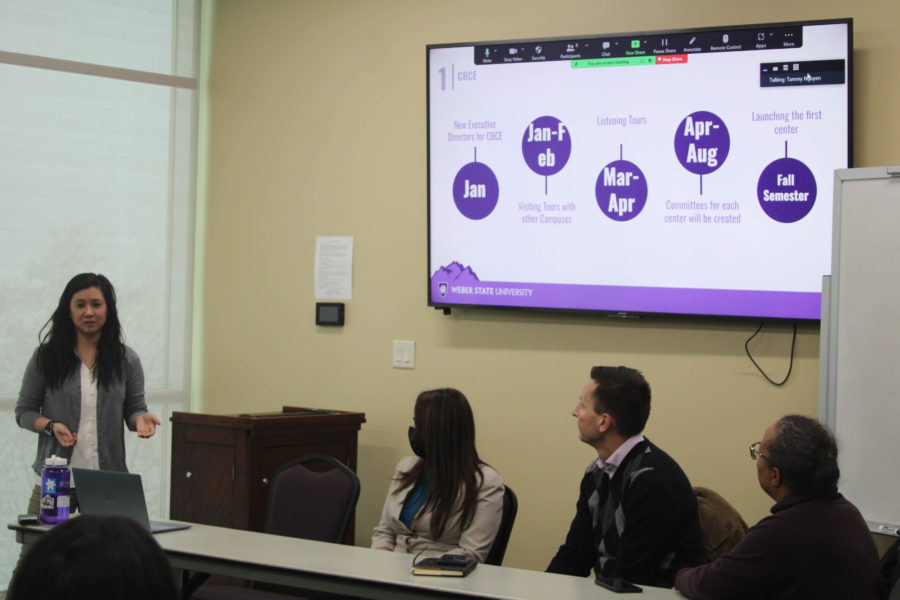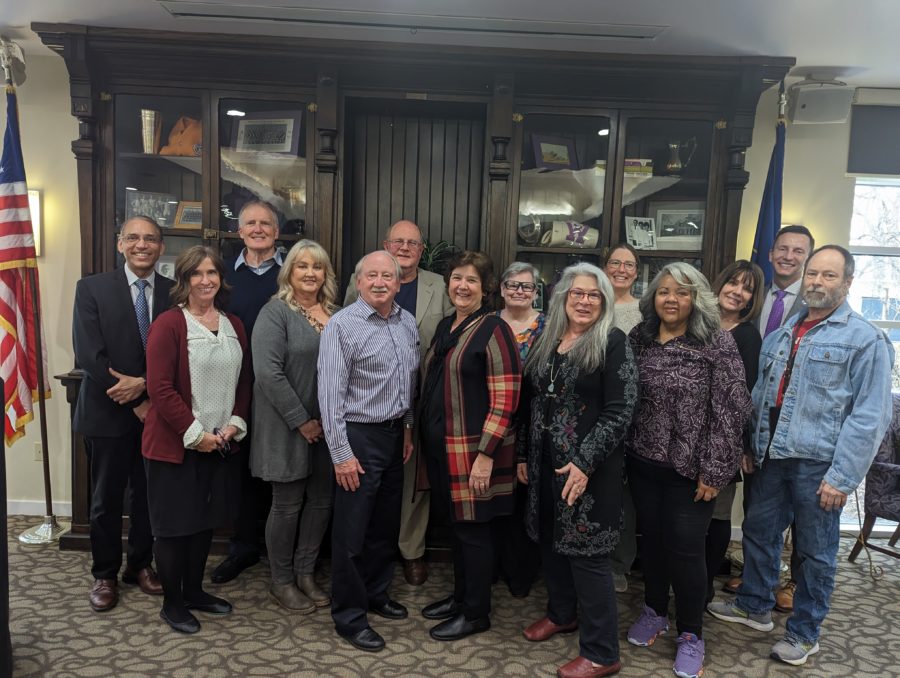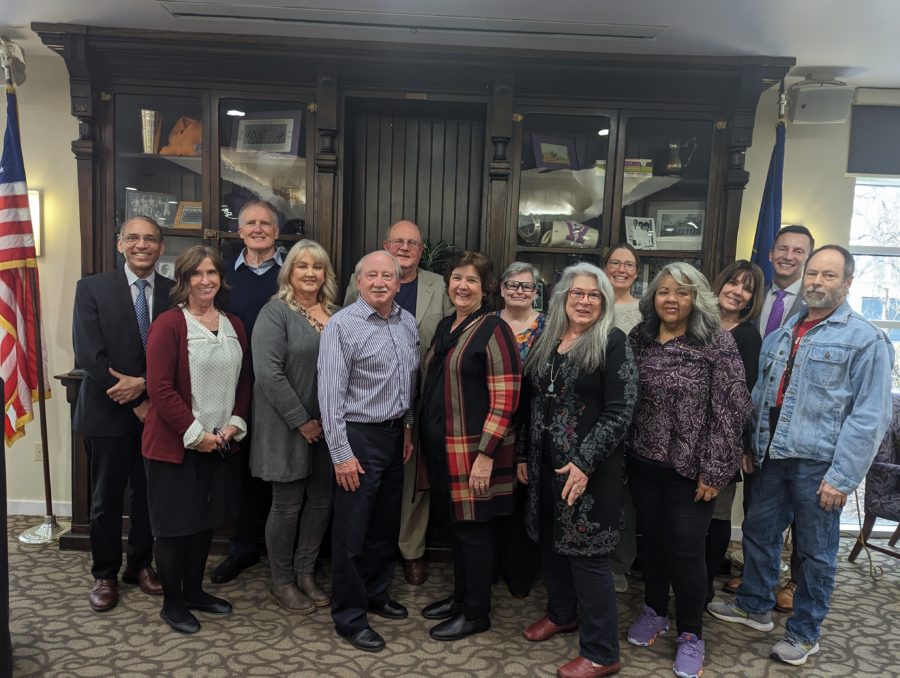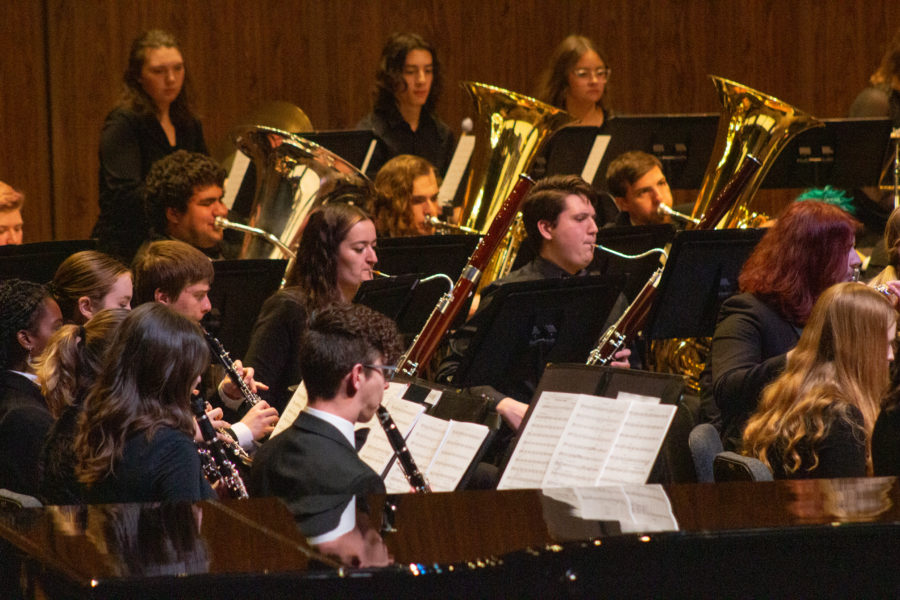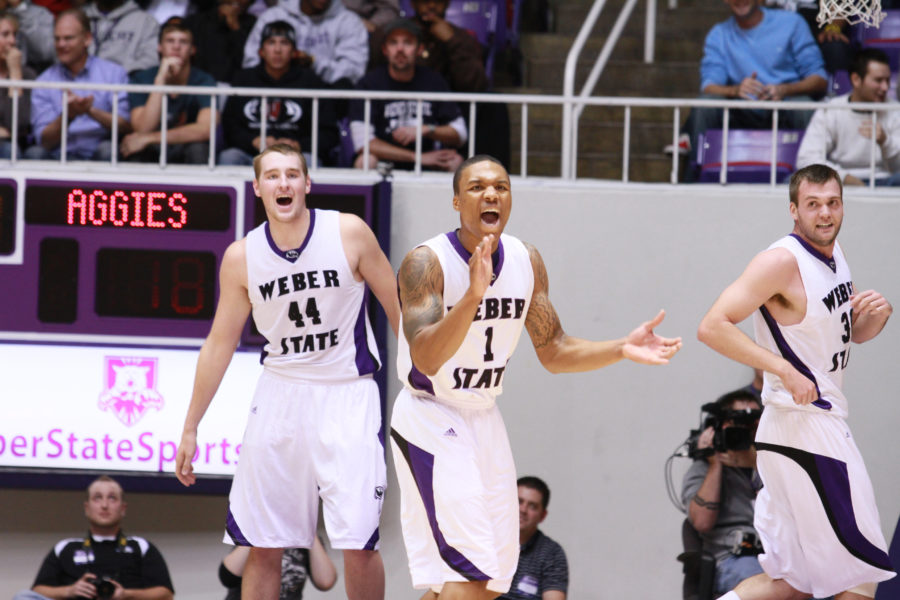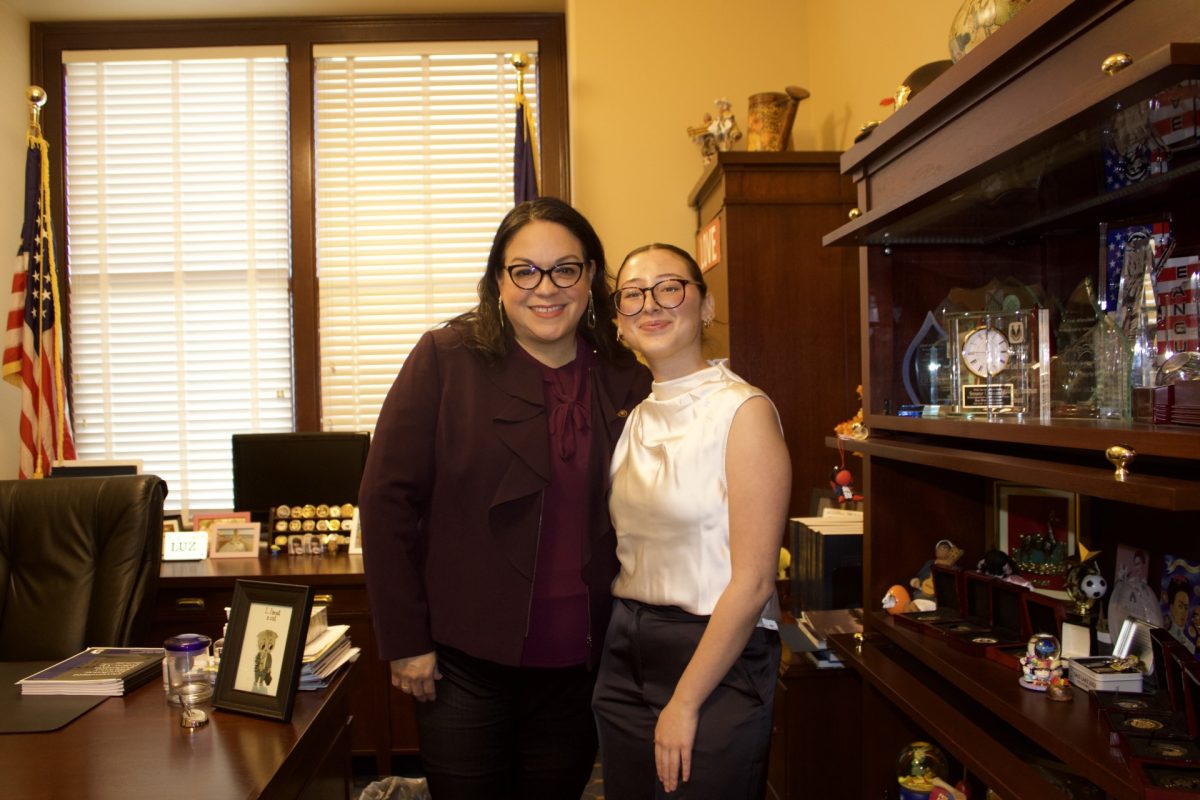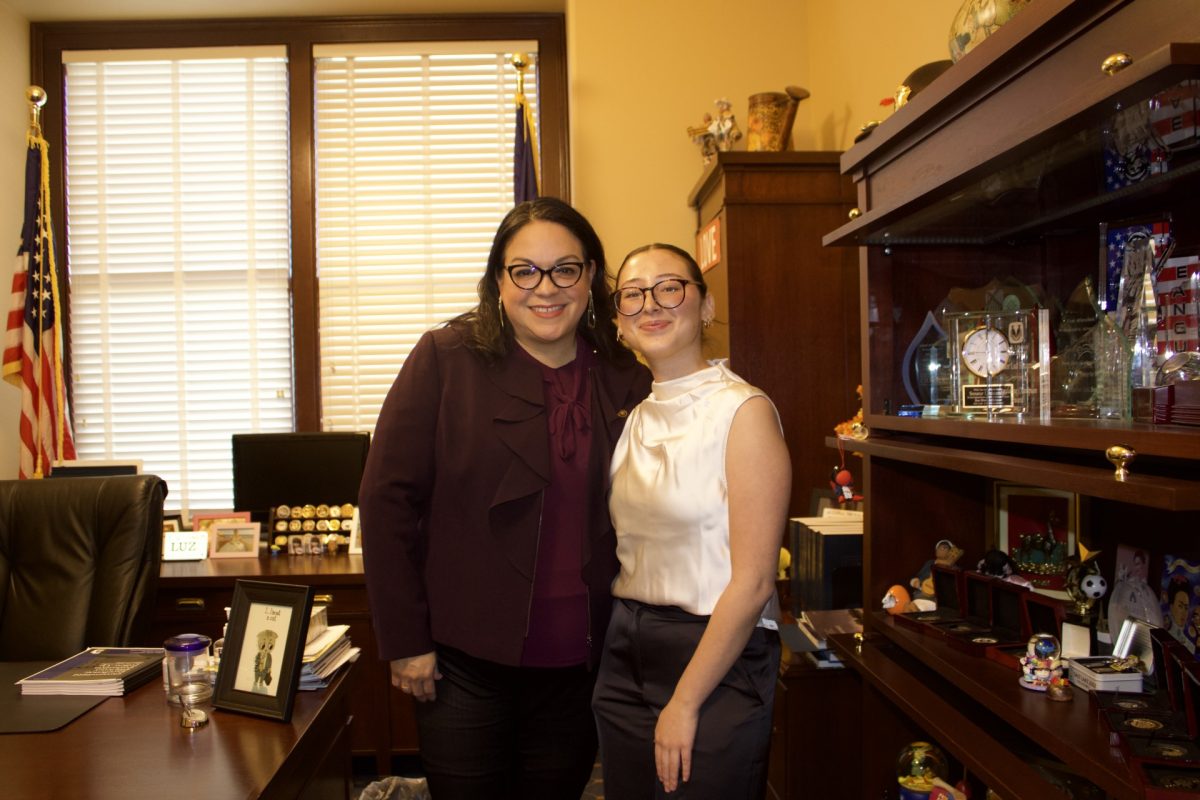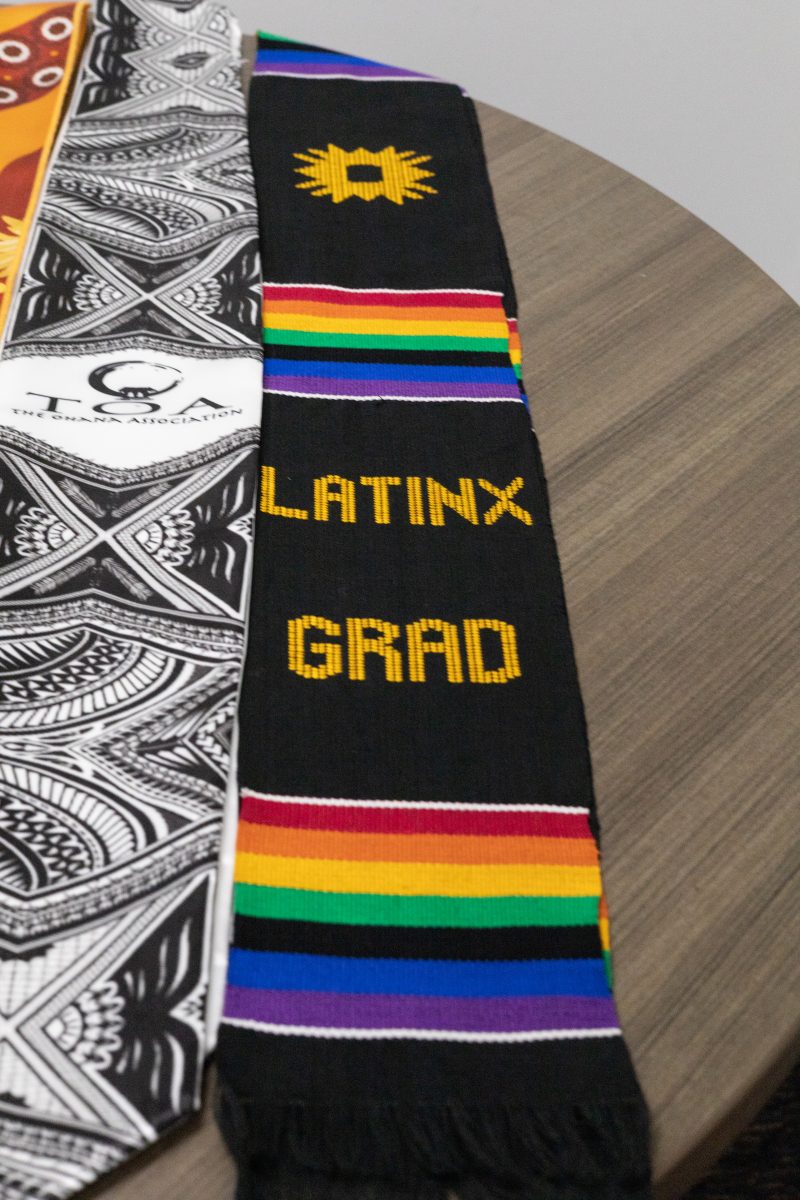In 2003, 18-year-old Christina Huerta entered Weber State University a wide-eyed first-generation student looking to pursue a degree in communications. Nearly 16 years later, she is receiving her diploma.
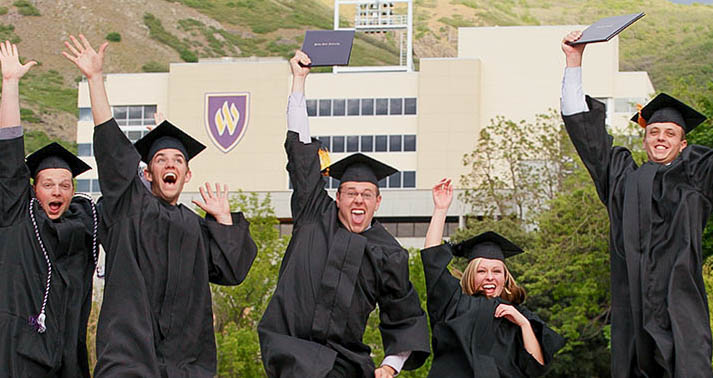
Huerta had “mentally checked out of school” after her first two years, causing her grades and academic scholarship to slip. With no way of paying tuition, she decided to drop out during her fifth semester.
“Going straight from high school to college was a lot to handle,” Huerta said. “I came from a low-income family, and I had to work.”
She later revisited her education as the mother of a 1-year-old son, with another soon on the way. A week after giving birth to her second child, she returned to campus determined on finishing her degree.
“I was in a different mindset at that age than I was when I was 18,” Huerta said. “I had a baby, and I came back a week later to take finals and everybody was like, ‘What are you doing here?’ I want to graduate. That’s what I’m doing here.”
Huerta’s academic persistence makes her an anomaly. Other students facing similar challenges at WSU drop out at substantial rates.
According to the Integrated Postsecondary Education Data System, the rate of freshmen at WSU who graduated in six years as of 2017 was 38 percent.
That, coupled with the fall-to-fall student retention rate of the same year — which was 65 percent — places the school below the national average in terms of students who successfully graduate on time.

In 2014, WSU experienced an initial cohort enrollment of 2,168 students, according to the university’s Student Persistence and Success Institutional Research. By fall semester 2015, nearly half of those students had dropped out.
Additionally, the research showed WSU’s six year graduation rate between 2008 and 2012 reached a high of 21.2 percent and a low of 18.5 percent.
These numbers are undoubtedly short when stacked up against schools like Brigham Young University and University of Utah — whose graduation rates lie between 60 and 80 percent.
However, when compared to Utah Valley University and Dixie State University, two institutions with similar student demographics as Weber, the numbers are right in line.
The data shows that the amount of students in 2017 who graduated within six years of enrollment at UVU was 30 percent, a rate lower than WSU’s. At Dixie, that number was 18 percent, placing the school at the bottom of the list of major universities and colleges in Utah.
One of the common factors linking Weber, Dixie and UVU are their open enrollment policies in student acceptance. Students are welcomed into the schools with open arms regardless of high school grade point averages and college readiness assessment scores.
“If you compare us against BYU, then that’s going to be a very different comparison,” said Associate Provost for Enrollment Services Bruce Bowen. “Most of the lower students that we admit here would have never gotten into that institution.”
While this allows schools like Weber to reach a wider array of individuals, it also means a higher proportion of part-time students, working parents and students who require remediation to some degree in preparation for university-level coursework.
Those factors are obstacles in a student’s education. According to Weber’s Office of Academic Affairs, individuals under the extra burden of financial and familial obligations can often become discouraged in their studies, instead choosing to prioritize higher matters of urgency like putting food on the table.
“Students who come to us who are on a little less secure footing may find that they are more challenged and it may be more difficult for them to stay in school,” said Provost Madonne Miner.
This contributes to lower retention and graduation rates at universities like Weber with a higher number of first-generation, low-income students.
“We are looking at in part for some students a real culture clash in coming to college,” said Associate Provost for Academic Programs and Assessment Eric Amsel.
Another major component in this relationship is the higher need for student remediation found in open enrollment schools. Individuals like Huerta who come in as first-generation students often aren’t equipped with the necessary resources to succeed in college.
“We’re just not really prepared. I think that’s what really disheartened me my first time coming,” Huerta said. “I was in a program made for first-generation college students and they tried to prep me as best as they could, but when I came in and tried to take the test to see where I was going to be placed, I still needed remediation.”
One of the academic areas at WSU often seeing the most students in developmental courses is mathematics.
Kristi Sheffield — a 58-year-old criminal justice major — has been a student at WSU for the better part of eight years, with the majority of her time spent in preparatory math courses.
After a falling-out with the head of the developmental math department, she enrolled in the Math 0990 course for a total of six times before she was able to advance on to 1010. During that time, she took a two year hiatus from college after a hold was placed on her registration for failing the class too many times.
“My experience here at Weber has been anything short of warm and fuzzy,” Sheffield said. “But I’m not a quitter. I’ve got a lot of money and time invested here. I started here and I want to finish here.”
Tyler Hall, another student with a prolonged college education, spent two years in remediation before he was able to earn credit to satisfy his general math requirement.
“Once you clear that math hurdle, that is a good day,” Hall said. “The day I passed math, I realized I can actually graduate now if I finish all this other stuff.”
WSU officials have been working to solve the dilemma of student remediation — particularly in mathematics — for several years.
After implementing the Real-world Explorations Active Learning Pre Algebra course in 2014, which provides a learning environment similar to the Pathway course for Math 950 students, the department saw a 6 percent increase in passing rates, according to the Utah System of Higher Education.
With a heightened focus on improving student retention, Miner and her team in Academic Affairs are also looking to create programs that help students feel supported on campus.
“It’s hard to feel a sense of belonging if you’re being told that you don’t belong in college,” Amsel said. “We are experimenting with all kinds of ways of supporting students in college level classes without remediation.”
One of the most notable potential solutions is Starfish. Embedded within student accounts on Canvas, officials believe Starfish will decrease the number of students falling through the cracks by using a series of notifications to alert faculty and advisors when a student is excessively absent or not performing well.
The school is also encouraging professors and academic advisors to pay more attention to students who are struggling. Rather than only including those who show up to class, Miner stressed that it is equally as important to make sure the students who are floundering feel just as involved.
“We are pushing our retention advisors to be more hands-on just as Starfish is hands-on and touching students more frequently,” Miner said. “Having that human power really matters.”
Despite the effort being made to increase student retention and graduation rates at Weber State, Miner and her team are not worried about the effects these numbers may have on state funding.
“The Legislature pays attention to what our retention rates are but they also recognize that each of the eight USHE institutions has a different mission,” Miner said. “We’re not Utah State University. We’re not University of Utah. We’re Weber State and we’re doing pretty well.”



